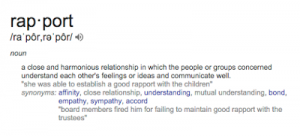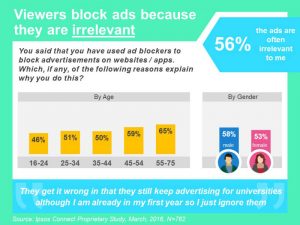Effective data management is critical to B2B digital marketing success. Columnist Sonjoy Ganguly explains how implementing a rich, B2B-focused data structure and collaborating with the right strategic partners can make all the difference.

In digital media and advertising, data management platforms (DMPs) have become an essential tool that “ingests, classifies, sorts and houses information, and then delivers it in a way that’s useful for marketers, publishers and other businesses.”
But for B2B marketers, these tools have a major flaw.
As the name implies, B2B marketers sell into organizations (e.g., General Electric, Boeing, Nestle), not individual consumer demos (e.g., millennial male in New York DMA, $100K+ income, in market for SUVs). Traditional advertising technologies and data management practices, to date, have predominantly focused on managing individuals rather than companies.
That is core to the issue: How do you market to the right companies if existing systems and practices are predicated upon targeting individual consumers? B2B marketers don’t benefit from solutions that allow them to target “soccer moms,” “tech-savvy millennials” or other consumer-based lookalike audiences. They need a much more precise and relevant targeting scheme.
For example, the CMO at an enterprise software company with long sales cycles (nine to 18 months) needs to simultaneously monitor, analyze and surface insights on cross-departmental stakeholders across levels of seniority and diversity, all within discrete organizations. At large corporations, this can include the Financial Analysts, Director of Finance, CFO, VP Engineering, CTO, Architects, Engineering Directors, Procurement Managers and dozens of other business stakeholders, from the first introductory call to a signed contract and through the process of onboarding, as well as utilization.
With B2B marketing and advertising spend reaching $161 billion — and digital accounting for over half — B2B CMOs and CIOs need to dramatically change their data management approach to avoid drowning in irrelevant data and legacy systems that were designed for an entirely different practice. This is only possible by reorganizing their data infrastructure around B2B’s unique go-to-market needs and working with partners that support these new standards.
First things first: Extend company attributes
Basic audience targeting is too broad and is just not an effective mechanism for B2B marketers. B2C marketers now have a seemingly endless pool of data to define target audiences across devices, from historical purchases and behavioral data to location-based visitor arrivals. But ask any B2B marketer, and their targeting parameters look awfully similar to ones found in playbooks from several years ago: industry, company size (employees), revenue (if public) and office headquarters’ locations.
B2B CMOs need to significantly expand the company attributes they track — ones that provide signals that are uniquely relevant to the products and services they sell — and allow sales and marketing teams to communicate more tailored messages by account. These can range anywhere from, “What other software is installed?” and “Which types of solutions are they researching?” to “How much do they currently spend on R&D?”
Once the extended attributes are strategically identified, CMOs must persistently incorporate these new signals throughout their internal systems to keep alignment across teams. These new signals require organizational commitment to adopt new procedures that utilize and act on the signals to improve their marketing effectiveness.
Build out a rich company-user ontology
Once more granular and vivid company-based information becomes ingrained throughout the marketing and sales organizations, it behooves CMOs and their CIOs to further build out a rich ontology. With the exponential growth of data (which also includes more user-generated content than ever before), creating taxonomies to classify and categorize the data is absolutely critical to making these massive unstructured data assets actionable at scale. But the sheer volume and the denormalized nature of this data make it very complex to classify it correctly.
At best, traditional DMPs, integrated with other existing targeting solutions, might allow a B2B marketer at an enterprise software company to target individuals with “CTO” in their title, at companies of a specific employee or revenue size, and located in certain DMAs or cities. The problem with this approach is that CTOs may not always represent the right stakeholder to engage on an account-by-account basis. Maybe the account is not actively looking for your solutions, which means your standard messaging may not be as effective with that account. In other words, the appropriate audiences at prospective accounts can differ starkly, based on sizes of the accounts, an account’s existing needs and more.
By creating a more robust ontology, B2B marketers can use these extended attributes to better inform and influence their list of target accounts, which people to actually target at those accounts and what messaging may be more effective in engaging those accounts.
Find the right long-term partner
This expanded B2B data management framework ultimately enables B2B marketers to build and execute more relevant, seamless messages against key influencers across the organization on an account-by-account basis.
But CMOs and CIOs alone lack the capacity — in budget, time and resources — to design and implement this massive and essential modernization of its data infrastructure. It is important to identify strategic partners that not only can provide access to technology and data but can also help them determine how to modernize their practices to act on that data.
As such, it’s incumbent upon executives charged with this initiative to ask partners probing questions to gauge alignment with long-term business goals and viability. These questions should include understanding how they are using technology to create and automate the development of their ontologies to make the scale of their data more actionable.
In an increasingly demanding environment for personalized B2B messages — delivered through the right channels at the right time — B2B marketers must raise their standards on data management. By upending traditional models, implementing a rich B2B-focused data structure and collaborating with partners that allow new principles to flourish, there’s no stopping what B2B marketers can accomplish.
Some opinions expressed in this article may be those of a guest author and not necessarily Marketing Land. Staff authors are listed here.
Marketing Land – Internet Marketing News, Strategies & Tips
(58)
Report Post








